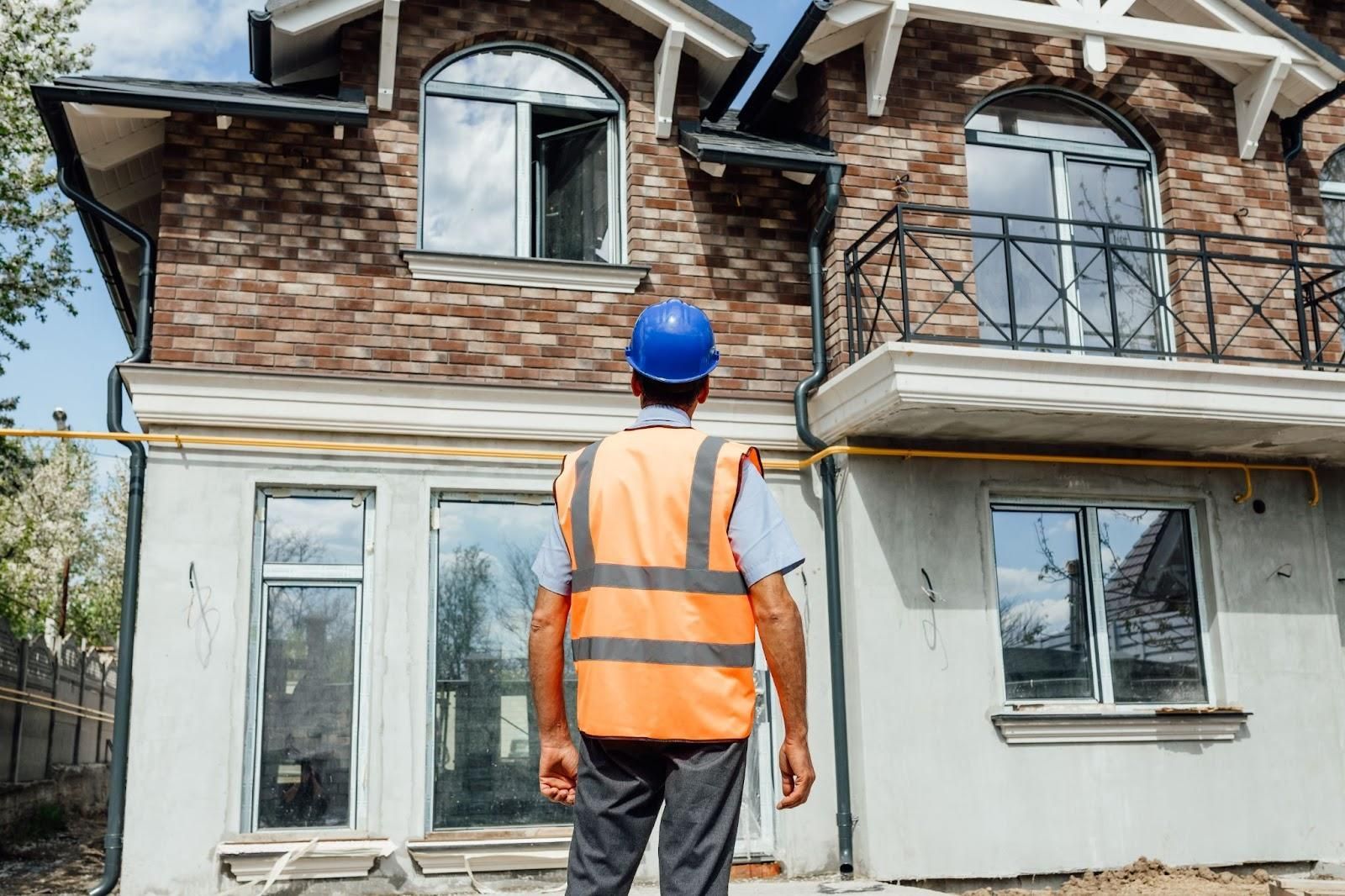Pass Your ADA Compliance Inspection: Step-by-Step Guide
The ADA compliance inspection process often brings anxiety, as it requires a thorough understanding of accessibility standards and meticulous attention to detail. Property owners, especially business owners frequently find themselves frustrated, unsure of what to expect or how to prepare.
With a commitment to providing reliable and precise inspections, Accurate Home and Inspection Services, ensure property owners have a clear understanding of their compliance status. We offer tailored solutions that transform a potentially stressful experience into a seamless one. By prioritizing accuracy and transparency, property owners can confidently navigate the ADA compliance landscape, ensuring peace of mind and adherence to regulations.
Overview of ADA Compliance
ADA compliance ensures that public spaces are accessible for individuals with disabilities. The Americans with Disabilities Act (ADA) sets specific standards for accessibility in buildings and facilities. Property owners must understand these standards to avoid penalties and create inclusive environments.
ADA compliance involves a detailed inspection process, assessing various aspects of buildings. These aspects include entrances, pathways, restrooms, and other essential facilities. Each element must meet the ADA's guidelines to ensure maximum accessibility.
Assessing compliance starts with identifying any barriers that may exist. Evaluators examine ramps, door widths, and signage, among other components. They ensure that all features align with ADA regulations, such as a minimum door width of 32 inches for accessibility.
Understanding the ADA compliance inspection process contributes to creating accessible spaces. Compliance not only avoids legal repercussions but also fosters inclusivity. Property owners, realtors, and developers benefit from comprehensive inspections to uphold ADA standards diligently.
For reliable ADA compliance inspections in Texas, property owners can trust Accurate Home and Commercial Services. Schedule a service today to ensure your property adheres to ADA regulations.
Importance of ADA Compliance Inspection
ADA compliance inspections play a crucial role in ensuring accessibility for individuals with disabilities. These inspections prevent legal complications and enable property owners to create inclusive environments.
Legal Requirements
Legal requirements set forth by the Americans with Disabilities Act (ADA) mandate that public spaces meet specific accessibility standards. Failure to comply with these regulations can lead to penalties and lawsuits.
Property owners must understand the legal framework surrounding ADA compliance, which includes detailed inspections of building features such as entrances, restrooms, and pathways.
Benefits for Businesses
Businesses benefit significantly from ADA compliance inspections. Ensuring full ADA compliance not only fosters an inclusive environment but also enhances customer experience. Accessible spaces attract a broader customer base, positively impacting revenue. Maintaining compliance boosts a business's reputation, showcasing a commitment to inclusivity and social responsibility.
Accurate Home and Commercial Services assists businesses in achieving and maintaining this compliance, promoting an inviting atmosphere that appeals to all customers. Priority on accessibility sets businesses apart in competitive markets, leading to long-term benefits and community goodwill.
Steps in the ADA Compliance Inspection Process

Understanding the steps in the ADA compliance inspection process helps ensure proper accessibility standards for all properties.
Pre-Inspection Preparation
Identify necessary documents, such as previous inspection reports and building plans. Gather all relevant information for the property, including existing accessibility features. Arrange a suitable time for the inspection, ensuring all stakeholders are informed. Verify the inspector’s credentials and experience specific to ADA compliance. Notify facility personnel, allowing them to prepare for any required demonstrations of accessibility features.
Conducting the Inspection
- Evaluate all areas of the property for ADA compliance, focusing on entrances, pathways, and restrooms.
- Observe access points, door widths, and signage requirements.
- Check parking facilities for appropriate disabled spaces and pathways.
- Examine internal features such as elevators, handrails, and tactile surfaces.
- Document findings with detailed notes and photographs, ensuring clarity on compliance issues.
Post-Inspection Actions
- Review the inspection report thoroughly, noting areas needing improvement.
- Develop a prioritized action plan to address compliance issues efficiently.
- Schedule follow-up inspections to confirm corrections and enhancements.
- Provide employees and management with training resources to maintain ongoing compliance.
- Maintain clear communication with stakeholders regarding deadlines and updates on different compliance levels.
Challenges in ADA Compliance Inspections
ADA compliance inspections present several challenges for property owners. These challenges often stem from complex regulations and a lack of understanding about specific requirements.
Common Issues Found
Common issues identified during inspections include:
- inadequate accessible parking spaces,
- improperly designed ramps, and
- non-compliant signage.
Many properties fail to meet threshold height requirements or lack adequate pathways for wheelchair users. Additionally, restrooms often do not adhere to necessary dimensions or configurations, making them inaccessible. These issues can lead to increased anxiety as property owners navigate compliance while aiming to create an inclusive environment.
Solutions and Best Practices
Solutions for addressing ADA compliance challenges involve regular evaluations and proactive measures:
- Property owners should prioritize hiring licensed inspectors familiar with ADA standards to conduct thorough assessments.
- Maintaining open communication with stakeholders throughout the compliance process can clarify expectations and enhance understanding.
- Implementing staff training on accessibility features also proves beneficial.
- Integrating feedback mechanisms allows property owners to remain aware of accessibility concerns and adapt as needed.
- Prioritizing these best practices cultivates not only compliance but also a welcoming community for all individuals.
Conclusion
Navigating the ADA compliance inspection process can be daunting for property owners. With the right support and guidance it becomes manageable and less stressful. Accurate Home and Commercial Services stands out as a reliable partner in this journey. Our expertise not only ensures compliance but also promotes inclusivity and accessibility in public spaces.
By prioritizing ADA compliance property owners can enhance their reputation and attract a diverse customer base. Embracing these standards is more than just meeting legal requirements; it's about fostering a welcoming environment for everyone. With a commitment to accessibility businesses can differentiate themselves and contribute positively to their communities.
Frequently Asked Questions
What is ADA compliance?
ADA compliance refers to meeting the standards set by the Americans with Disabilities Act to ensure accessibility for individuals with disabilities in public spaces. It covers various aspects such as entrances, pathways, signage, and restrooms.
Why is ADA compliance important for property owners?
ADA compliance is crucial for property owners to avoid legal penalties, foster inclusivity, and enhance customer experiences. It not only creates an accessible environment but also boosts a business's reputation and social responsibility.
What should I expect during an ADA compliance inspection?
During an ADA compliance inspection, a licensed inspector will evaluate your property's accessibility features, including access points, signage, and internal areas. You'll receive a detailed report highlighting any compliance issues and suggested improvements.
How can Accurate Home and Commercial Services help with ADA compliance?
Accurate Home and Commercial Services provides reliable inspections and expert guidance, simplifying the ADA compliance process for property owners. They focus on accuracy and transparency, helping owners identify areas needing improvement.
What are common challenges in achieving ADA compliance?
Common challenges include understanding complex regulations, inadequate accessible parking, improperly designed ramps, and non-compliant signage. These issues can create anxiety for property owners aiming to ensure accessibility.
How can property owners prepare for an ADA compliance inspection?
Property owners should gather necessary documents, verify the inspector's credentials, and prepare staff for accessibility demonstrations before the inspection. This preparation helps streamline the inspection process and ensure comprehensive evaluations.
What steps follow after an ADA compliance inspection?
After an inspection, property owners should review the report, create an action plan for improvements, and maintain open communication with stakeholders. This proactive approach fosters ongoing compliance and accessibility enhancement.
How does ADA compliance benefit businesses?
ADA compliance enhances customer experience, attracts a diverse customer base, and improves a business's reputation. By prioritizing accessibility, businesses can differentiate themselves in competitive markets and build community goodwill.











